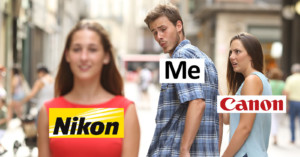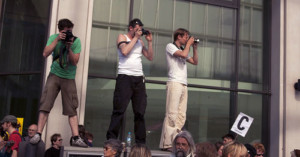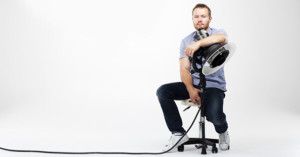
Creators Earned $47,000 From Stock Photos, But is it Really That Easy?
Recently, the creators behind Mango Street shared how their stock photos made them $47,000 in one year, but how realistic is this scenario for other photographers to emulate?

Recently, the creators behind Mango Street shared how their stock photos made them $47,000 in one year, but how realistic is this scenario for other photographers to emulate?

You don’t need to have a portfolio of hundreds of thousands of images to rank on the first page of the most visited customer queries. In fact, we found that 83% of Shutterstock contributors that rank on the first page of top-500 customer queries have less than 10,000 images in their portfolio.

In preparation for this year's virtual AdobeMAX conference, Adobe has unveiled two new initiatives that are meant to "inspire and empower diverse voices as we democratize creativity": an Artist Development Fund, and a massive free collection of 70,000 photos, illustrations, vectors and other Adobe Stock assets.

A new "Stock Coalition" made up of photographers, illustrators, animators, and filmmakers from around the world is calling for a "global shutdown of Shutterstock portfolios" to protest the recent change to the stock giant's royalty structure. The industry body is asking contributors to disable their accounts for "at least one week" starting today.

For those who are anywhere near the microstock photography industry, you may have noticed that there is a lot of shouting going on at the moment about the latest release from Shutterstock.

Heads up: if you sell your photos as microstock, companies can use your work in big ways for a very, very small payment. A photographer just found that out the hard way after he found one of his photos featured on a number of products in Walmart.

One of the hottest memes this year is the "Distracted Boyfriend," also known as "Man Looking at Other Woman." It shows a man looking backward, checking out another woman while his partner gives him a disapproving look.

Have you ever wondered what your travel photos are worth? Most people take travel photos for themselves to remember the experience or share on social media. To each of us, these photos are priceless, but what are they worth to others? This is the question I asked myself back in 2012, and I have been pleasantly surprised with the answer.

If you're an active participant in the stock photography industry, you've likely heard of the big rumblings as of late. Earlier this month, bestselling microstock photographer Yuri Arcurs announced both a $1.2 million investment in Scoopshot (a crowdsourced photo app) and a new exclusivity agreement with Getty Images/iStockphoto.
If you dismissed the news the first time around, you might want to take a second look -- it may be bigger than you thought.

Most stock photography websites and agencies work the same way: photographers upload their work, set prices, and let clients browse for what it is they're looking for. If the client wants a photo of a family on the beach, they'd better hope someone came through. And on the other end, the photographer has to hope that they're putting work out there that people will actually want to use.
Advertising creatives Cassandra Nguyen and Grazina Snipas' new website PicoImages does away with that model, replacing it with more of a "stock photography to order" sort of system.

I recently began contributing to Stocksy United (AKA Stocksy), the new(ish) stock photography agency that is headed up by Bruce Livingstone of iStockPhoto notoriety fame.

Bruce Livingstone knows his way around the stock photography industry, and he's doing his best to shake things up. After founding iStockphoto in 2000, he turned it into a microstock juggernaut, finally selling it to Getty Images in 2006 for a whopping $50 million. Now, as both Getty Images and iStockphoto are mired in a licensing controversy, Livingstone has a new stock photo business that may rock the boat even more.

A new controversy is brewing in the world of stock photography. Just last month, it came to light that Getty had agreed to license 5000 of its stock photos to Google while paying the creators of the images a meager one-time fee of $12. Now, one of Getty's most successful stock photographers is claiming that his account is being terminated in the aftermath of the first hoopla.

We don't know how they do it, but College Humor's sketch videos often have famous celebrities making fools of themselves in the name of comedy. Above is a parody infomercial they released today featuring actor Patrick Wilson. He states that prior to his acting career, he worked as a stock photography model and was featured in over 133,000 stock images.

If you’re trying to make some side money by selling photographs as microstock — or are trying to do …

German broadcaster Deutsche Welle produced this interesting segment on photographer …

Microstock did a lot of damage by turning traditional stock photography on its head, but now a company called …

The rise of microstock and the fact that anyone with a camera can sell cheap photos has done a …

Yuri Arcurs -- AKA the "King of Microstock" -- is the best selling microstock photographer in the world, selling over 2,000 images a day and 2 million a year. Visit his website here.
PetaPixel: Could you tell us a little about yourself and your background?
Yuri Arcurs: I was born in 1976 in Aarhus, Denmark, where I still live with my fiance, Cecilie, and our dog, Maff. As a child I spent some years in the U.S. but I returned to Denmark and joined the army, and later on I continued with my studies in Psychology at Aarhus Univerity. These days I feel like I’m not doing much else besides stock photography, but when I do have time for other things I really enjoy a good work-out. I have always been a very active person, which was probably one of the reasons I joined the army when I was younger, but right now I try to focus all of my energy on stock. So, unfortunately, marathons and the likes will have to wait!

This video by FotoTV features “microstock king” Yuri Arcurs leading a workshop and …